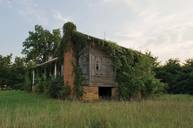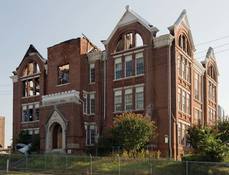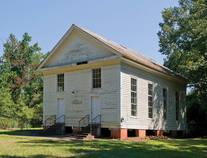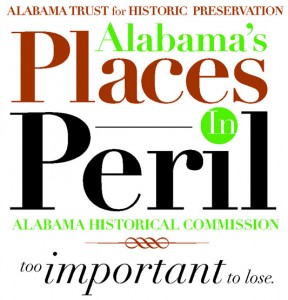 Click image to enlarge.
Click image to enlarge.
 Click image to enlarge. Click image to enlarge. With the removal of Native American tribes from Alabama lands, white settlers poured into the area to make their fortune in cotton. Born in Lincoln County, Georgia, Robert Jemison brought his family and slaves to Talladega County in 1837 and began acquiring property in the rich bottom lands bordering the Choccolocco and Cheaha Creeks. Joined in Alabama by six of his siblings, Jemison achieved great wealth and political infl uence (and Robert Jemison Jr., a descendent of the original Robert Jemison, became instrumental in the development of Birmingham). Th e house eventually was acquired by the Turner family, who established a mill nearby, and it remained in their ownership until the 1960s.
3 Comments
 Click image to enlarge. Click image to enlarge. As the broad outlines of the new industrial city called Birmingham began to fill out and take form, its early leaders responded to calls to create a free school system for the children of the city’s workers. Capt. James R. Powell, Birmingham founder and president of the Elyton Land Company, donated four blocks for the city’s first public school in 1873. The first building used for the school, named Powell School but also known as the “Free School,” was replaced in 1888 with the current structure, which retained the name.  Click image to enlarge. Click image to enlarge. As settlers moved into the newly opened lands of the Alabama frontier, they brought with them the institutions and traditions that had sustained them in their former homes—including, for many of them, their religious traditions. In addition to fostering a relationship with God, churches became instrumental tools for building communities and a sense of kinship, easing the sense of loss of loved ones left behind. |
Alabama's Endangered Historic LandmarksEach year since 1994, Alabama Heritage has highlighted threatened historic sites throughout Alabama. The “Places in Peril” list has identified more than 215 imperiled historic resources throughout the state, and is compiled by the Alabama Historical Commission and the Alabama Trust for Historic Preservation. The locations highlight the results of deferred maintenance, perceived obsolescence, development pressures, and lack of funding—forces that now more than ever threaten our cultural legacy. But awareness is a powerful force, too, and can cultivate a renewed determination to be responsible stewards of our heritage. For more information, visit the AHC or the ATHP websites. Alabama Heritage is proud to bring to you a selection of the places designated as perilous. Please keep your comments to information relevant to the featured place in peril. Alabama Heritage reserves the right to delete any comment that we deem inappropriate. Archives
May 2024
|

 RSS Feed
RSS Feed